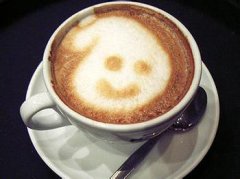What is good coffee?
Measuring the quality of coffee dates back to the 1950s. At that time, E.E., a professor in the Department of Chemistry at MIT. Lockhart conducted a series of surveys to study American taste preferences. He generally surveyed many coffee drinkers and asked them about their preferences and tastes.
Lockhart published his research with a "coffee brewing control chart", showing what Americans thought was the best coffee in the form of a chart.
Years later, the American Professional Coffee Association (SCAA) confirmed that American tastes had not changed much. For Americans at least, the perfect coffee is coffee with an extraction rate of 18% to 22% and a total solid solubility of 1.15% to 1.35%.
Confused by technical terms? Please don't do this.
The extraction rate refers to the amount of coffee particles extracted from the original dry coffee residue. The total solubility of solids represents the actual percentage of coffee solids in a cup of coffee (commonly known as "brewing strength").
Put this information together and you get the coffee brewing control chart, in which the central area highlights the optimal combination of brewing intensity and extraction rate.
Our purpose of making coffee is to be perfect. Everyone seems to be bragging about their unique and mysterious process of achieving the best extraction rate, but we're here to tell you that it's no big deal.
Instead, the key is based on the golden ratio of one serving of coffee to 17.42 parts of water. This ratio best takes you to the best area, and there is no unit limit, which means it's up to you whether you want to be in grams, ounces, pounds, quartz stones or tonnage units.
Therefore, if you want to make coffee with an extraction rate of 20% and a total solid solubility of 1.28%, you can use 30 grams of dry coffee and 523 grams of water as the base, and then adjust it on this basis.
At the same time, the concepts of extraction rate and total dissolution of solids are often mistakenly confused. It is important to figure out the difference between the two concepts.
Brewing strength refers to the amount of solid coffee dissolved in your coffee. And the extraction rate indicates the amount of extract you get from dry coffee ingredients. The point is, espresso has nothing to do with bitterness, caffeine content or baking curve, only with the ratio of coffee to water in your cup.
The measurement methods of all these values were greatly innovated in 2008. A company called Voice Systems Technologies decided to apply the refractometer principle-- a refractometer is an instrument used to detect light waves refracted by particles-- to a project and developed a coffee concentration analyzer called ExtractMojo.
This instrument can accurately display the total solid solubility of coffee, and then compare it with the "coffee brewing control chart", so that you can prepare better coffee scientifically and with emphasis on taste.
Some purists object to using such a device to measure the quality of a cup of coffee, which reminds us, as retired Marines, of a similar topic, which is the discussion of gun control.
Is there something wrong with the gun itself, or is it the way people use the gun?
Is there something wrong with the concentration analyzer, or is there a problem with the way people use this instrument?
These issues have triggered heated discussions, and the starting point of the discussion is good. But guns and concentration analyzers are tools, and like other tools, they can be used inappropriately.
Let's look at this in terms of the "fortress principle" (castledoctrine): just use a concentration analyzer quietly at home.
Important Notice :
前街咖啡 FrontStreet Coffee has moved to new addredd:
FrontStreet Coffee Address: 315,Donghua East Road,GuangZhou
Tel:020 38364473
- Prev

Suggestions on formula beans
The coffee roaster began to try to mix coffee recipes, and he found that it would be nice to match high-body and low-body beans (Sulawesi, Costa rica), but if you combine a variety of high-acid coffee, it may not be as smooth as we think, but it may produce a conflicting sour taste.
- Next

The basic principles of making coffee
Once you figure out what good coffee is and how people measure it, it's much easier to learn to make coffee.
Related
- Beginners will see the "Coffee pull flower" guide!
- What is the difference between ice blog purified milk and ordinary milk coffee?
- Why is the Philippines the largest producer of crops in Liberia?
- For coffee extraction, should the fine powder be retained?
- How does extracted espresso fill pressed powder? How much strength does it take to press the powder?
- How to make jasmine cold extract coffee? Is the jasmine + latte good?
- Will this little toy really make the coffee taste better? How does Lily Drip affect coffee extraction?
- Will the action of slapping the filter cup also affect coffee extraction?
- What's the difference between powder-to-water ratio and powder-to-liquid ratio?
- What is the Ethiopian local species? What does it have to do with Heirloom native species?

